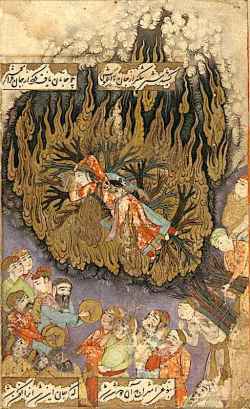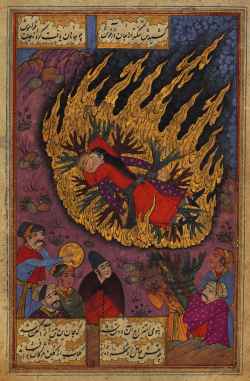What self-immolation means to Afghan women
in: Peace Review, v. 23 (2011), issue 1: pp.45-51.
Topics:
3. Sacrifice and politics (16th-18th Century) 5. Sacrifices of self: Martyrology and crusades including Reconquista (12th-20th Century)
3. Sacrifice and politics (16th-18th Century) 5. Sacrifices of self: Martyrology and crusades including Reconquista (12th-20th Century)
Edited by: Luca Aldo Patrizi
Related Documents:
Satī. The bride immolates herself on the funeral pyre (1657)
from: Isfahan, Iran
The Israel Museum, Jerusalem
Satī, from a Sūz u Gudāz manuscript. The union of the couple on the pyre (1657)
from: Sūz u Gudāz ms, Iran, Walters Manuscript W. 649, fol. 19b (Burning and Melting)
The Walters Art Museum, Baltimore, Maryland
The Role of Missionaries in the abolition of Sati custom in India with special reference to Serampore Missionary
in: Journal Of Humanities And Social Science (IOSR-JHSS), v. 20 (2015), issue 10: pp.52–55.
Sati: A Nineteenth Century Tale of Women, Violence and Protest
in: At the Edge of Psychology: Essays in Politics and Culture, pp.
Delhi: -, 1980.
Sati Stone (18-19th)
from: Madhya Pradesh, India
Jahangir Mahal Museum



